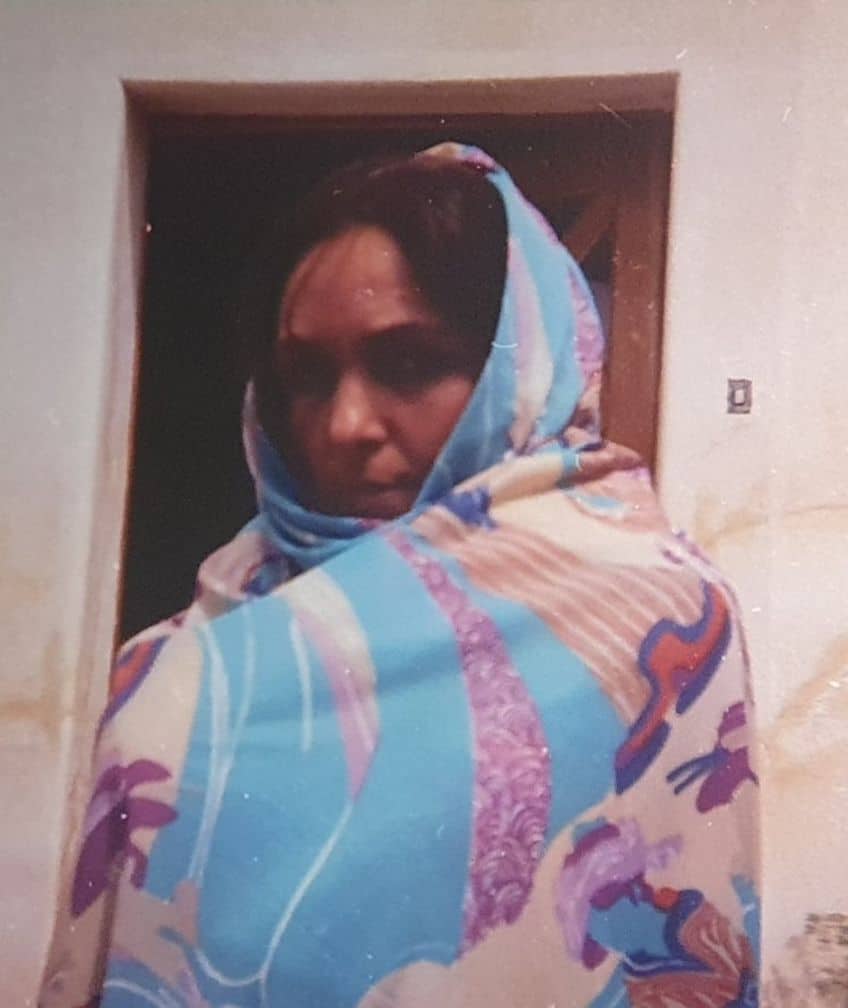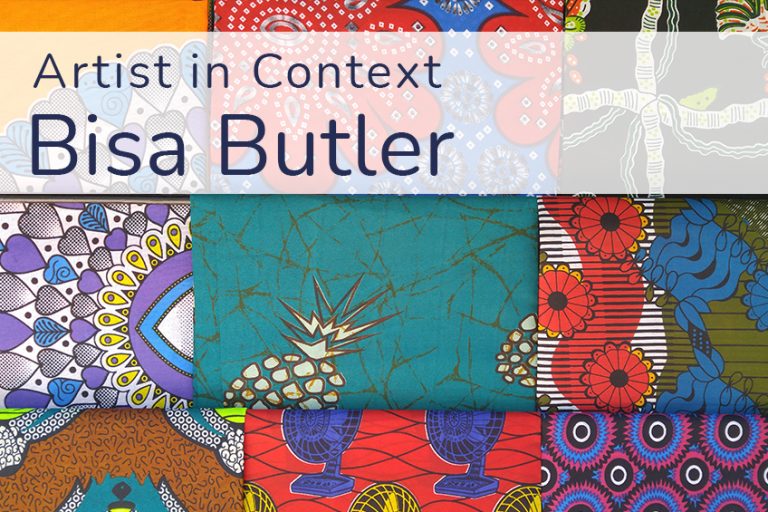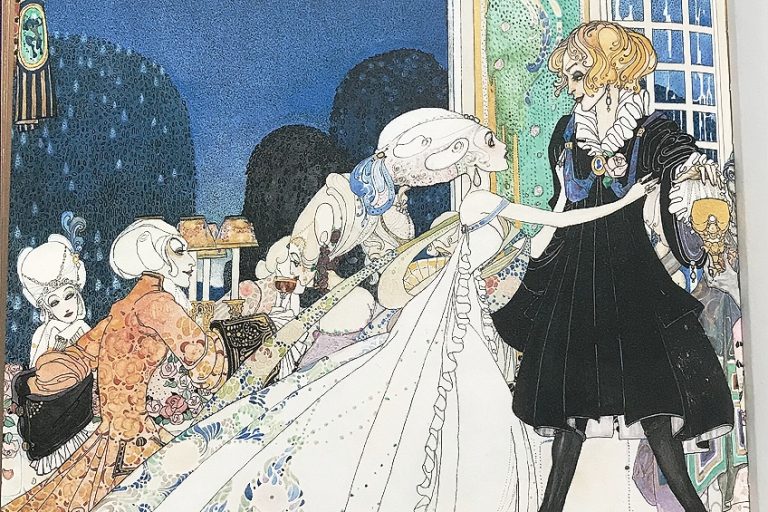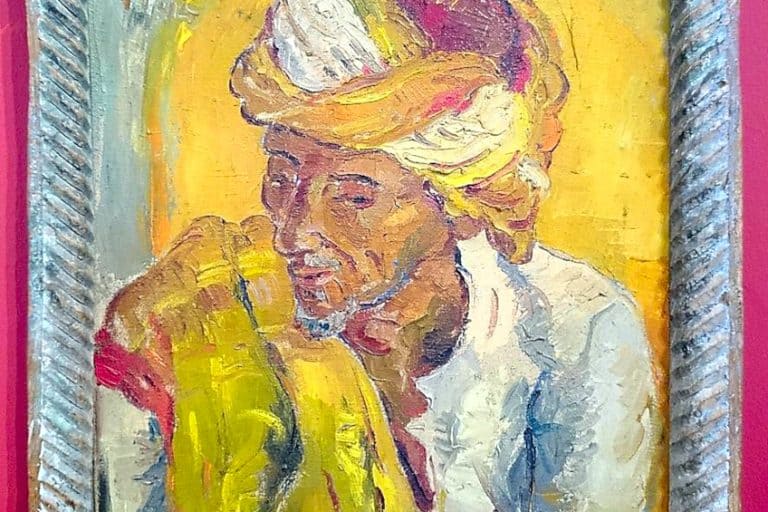Paula Rego – Famous Examples of Paula Rego Artwork
Famous for her magical, surreal, and darkly comical paintings and drawings, Dame Maria Paula Figueiroa Rego was a British artist of Portuguese descent. Paula Rego is known for her use of magical realism in her work, which often featured offbeat contemporary mythologies that hinted at deeper themes of psychology and sexuality from a female perspective.
Artist in Context: Who Was Paula Rego?
Paula Rego was a prominent contemporary figurative painter in Europe. Her art is internationally recognized and admired for its distinct style, complex tales, and social critique. Rego was born in 1935 in Lisbon to a family that encouraged her artistic talents and passion for the arts. Despite growing up in Europe at a period of political and social upheaval, Rego’s youth was filled with cultural richness and exposure to the arts, which surely informed her artistic perspective and her work.
| Date of Birth | 26 January 1935 |
| Date of Death | 8 June 2022 |
| Country of Birth | Lisbon, Portugal |
| Art Movements | Surrealism and Feminist art |
| Mediums Used | Painting, printmaking, pastels, and book illustration |

Childhood
Paula Rego was born into a wealthy family in Lisbon, Portugal. As a child, she was nurtured by a family that encouraged her creative pursuits. Her father was an engineer, while her mother was an avid art enthusiast who introduced her to the city’s vibrant art scene. Rego’s childhood was similarly marked by the disruption and uncertainty of World War II. Her later works, which frequently addressed issues of social injustice, inequality, and oppression, were undoubtedly influenced by these experiences.
Rego’s family gave her a safe place to hone her artistic skills despite the upheaval of the times.
Her mother played a significant role in inspiring her daughter to pursue an artistic career by regularly taking her to art museums and galleries. Rego’s early exposure to the arts sparked an interest in and appreciation for the creative process that would last throughout her life. Rego’s decision to pursue a career in the arts was not initially supported by her family, despite their investment in her early training and artistic passion. Her father doubted her ability to succeed as an artist, and it took her a long time to earn his approval. However, Rego’s formative years and education laid the groundwork for her subsequent achievements and solidified her position as an influential figure in the art world.

Education
Paula Rego’s education was essential to her growth as an artist, and she received her education at renowned institutions. Rego moved to London in 1952 to enroll in the Slade School of Fine Art after completing her initial training in art in Portugal. The Slade attracted many of the most gifted young artists of the time and was known for its strict academic approach to art education. Rego’s time at the Slade was transformative; she studied with significant artists like Lucian Freud, William Coldstream, and Frank Auerbach who pushed and broadened her artistic perspective.
Rego’s education at the Slade was distinguished by her dedication to studying the human form and developing her distinct figurative style.
She was drawn to the human body’s complexities, which she saw as a metaphor for the complexities of human nature and the larger world. Her education in the Slade also exposed her to London’s vibrant art scene, where she encountered a diverse range of artists and artistic styles that influenced her later work. At The Slade, Rego met Victor Willing. Willing was married to Hazel Whittington, but he and Rego fell in love and started an affair.

After finishing her studies in 1956, Rego returned to Portugal pregnant with Willing’s child. Rego turned to her parents after Willing returned to his wife. After a few months, Willing changed his mind and found Rego in Portugal. They married in 1959, had two more children, and spent seven years in Ericeira, Portugal. While in Portugal, Rego worked on refining her technique and artistic vision. Her early work was criticized in Portugal’s conservative political climate, and she struggled to gain recognition for her art. In the 1970s, Rego returned to London, where she found a more supportive artistic community.
Early Career
Paula Rego’s early career was defined by a struggle for recognition as well as a dedication to developing her distinct artistic style. Rego returned to Portugal from the United Kingdom in the late 1950s to find a conservative political and artistic climate hostile to her artistic vision. Nonetheless, she continued to create art and exhibit it in Portugal and elsewhere, frequently in group shows. Rego’s early work was characterized by a focus on the human form, particularly the female body, and an interest in delving into the psychological complexities of her subjects. Her work was frequently met with criticism and controversy, particularly for depictions of women that challenged traditional gender roles and expectations.
Despite this, Rego remained committed to her artistic vision and continued to refine her style by experimenting with various mediums and techniques.
As a result of her father’s purchase of a London house for her and her family in 1962, Rego began to split her time between Ericeria and London. Rego soon began showing her work in London as the only female member of The London Group, alongside artists like David Hockney and Frank Auerbach. This artist-led and organized group was democratic and apolitical and supported working artists since 1913. Rego had her first solo show in Lisbon at the Sociedade Nacional de Belas Artes in 1965 and in the same year, she participated in a group show called Six Artists at the Institute of Contemporary Arts London (ICA).
In 1966, Rego and Willing both lost their fathers and in the same year, Willing was diagnosed with multiple sclerosis. Willing decided to abandon his art career to run the Rego family business. The business failed in 1974, and the family moved back to London in 1976. Despite a difficult personal life, Rego had several solo shows in Britain and Portugal in the 1970s. During this time, Rego continued to develop her style, incorporating elements of surrealist storytelling into her paintings. Her work during this time focused on family, power, and social injustice, often featuring women. Her vivid colors, intricate textures, and dark humor set her apart from other artists.

Rego rose to international fame in the 1980s and 1990s. Rego became a leading feminist artist during this time. Rego began working with life models in the late 1980s. Rego especially used Lila Nunes as a model, who represents Rego herself in her paintings. In 1985, Nunes became Rego’s nurse to help her care for her dying husband, who died in 1988. Nunes remained Rego’s friend, model, and collaborator.
Mature career
Throughout the 1990s, Rego continued to work and paint prolifically. She had switched from paint to pastel by this point. Rego’s mature work was distinguished by an increased emphasis on storytelling as well as the use of allegory and symbolism to convey complex themes. Her paintings and drawings frequently reimagined characters and settings from literature, mythology, and folk tales using Rego’s distinct visual language. Her use of vibrant colors, intricate textures, and dark humor remained hallmarks of her work, but her technical skill and use of various mediums evolved as well.
Rego began exploring printmaking in the late 1990s. She applied the same meticulousness and symbolic language to her printmaking that she did to her paintings and drawings.
Many of the subjects of her prints were women, and they dealt with issues of violence, sexuality, and abuse of power. Rego’s work developed further throughout the 2000s, with a growing emphasis on the body and the relationship between the self and the other. Her later works frequently drew from her own life and experiences to examine topics like aging, memory, and grief. Her allegory and symbolism grew more nuanced and complex, allowing her to delve more deeply into her characters’ inner lives.
Rego’s later career was marked by sustained critical acclaim. She had many solo shows at museums and galleries around the world, and her work was included in important group exhibitions and retrospectives, including major retrospectives at the Tate in 1996 and again in 2021. Rego received the Portuguese government’s Order of Merit in 2004 in addition to other honorary degrees and awards for her contributions to the arts. Another retrospective of her work was held in 2004 at Porto’s Serralves museum, which was so well attended that it stayed open 24 hours a day. In 2009, her native Portugal honored her by constructing a museum in Cascais, where she had spent much of her childhood, called The Paula Rego House of Stories. The architect Eduardo Souto de Moura skillfully blended an impressive modern building with the surrounding natural beauty. The museum features not only Rego’s artwork but also that of her late husband, Victor Willing.
Rego passed away on June 8th, 2022, at the age of 87.
Three Important Paula Rego Paintings
Paula Rego’s paintings explored themes such as power, gender, and social inequality. Rego produced a sizable collection of work throughout the course of her career, including paintings, drawings, and prints that still enthrall and inspire viewers. In this article, we will focus on three of Paula Rego’s most important works.

The Firemen of Alijo (1966)
| Artwork Title | The Firemen of Alijo |
| Date | 1966 |
| Medium | Acrylic paint, oil pastel, charcoal, graphite, resin, ink, paper, and aluminum foil on canvas |
| Size (cm) | 153,9 x 184,3 |
| Collection | Tate collection, London, United Kingdom |
This Paula Rego artwork depicts a group of colorful, bright, and surreal figures against a background of warm orange and red hues. The figures are painted in a combination of human and animal shapes, with twisted abdominal forms and abstract mechanic shapes that remind one of Marcel Duchamp’s series of paintings, Brides and Nudes (1912). In 1966, Rego visited Alijo, a tiny town in northern Portugal, for the December holidays in 1965–1966. The title of the painting comes from a group of firemen she observed while on holiday in Alijo. That year’s winter was the coldest on record at the time.
It snowed, and the hotel where Rego, her husband Victor Willing (1928–1988), and her parents were staying didn’t have heating. Rego’s father was suffering from cancer and died six months later.
During this time, her husband, who was also an artist, was always in a bad mood, and Rego felt miserable. Living conditions were dire and Rego was shocked by how poor the people were. She saw firemen huddling together in the cold outside a pub. They didn’t wear shoes and wore straw-filled traditional Portuguese coats. Their faces were covered in black soot. The figures in the painting don’t resemble any specific fireman. Rather, they show how Rego felt at the time. By drawing from personal experiences, Rego uses her work to illustrate how she feels about moral, social, and political issues.
The Dance (1988)
| Artwork Title | The Dance |
| Date | 1988 |
| Medium | Acrylic paint on paper, mounted on canvas |
| Size (cm) | 228 x 289 |
| Collection | Tate collection, London, United Kingdom |
The Dance (1988) is an enormous Paula Rego artwork that depicts eight figures dancing on a moonlit shore. In the foreground, a group of three ladies of varied ages move in a circle holding hands. Close to them are two dancing couples (one of whom appears to be pregnant), and a woman standing by herself on the left-hand side of the painting. On the right side, in the background, is a massive, high, and jagged cliff, on top of which stands an enormous fortress-like building. The sky is painted in a deep blue and is filled with inky clouds and a full moon. The painting has a dreamlike quality to it. The surrealist qualities of the work is enhanced by the night time theme with long shadows and Rego’s odd use of scale, with the lone woman appearing much larger in relation to the other figures.
The Dance, at the time the largest painting Rego had painted, was completed in London, where Rego had relocated permanently in 1976. Rego claims that her husband, who passed away just before the painting was finished, recommended incorporating male characters into the painting.
She decided to add a figure modeled after her son Nicholas, who posed for her, and another figure based on a photograph of her husband. Rego donated eleven ink drawings where she planned the composition of The Dance to the Tate when they acquired the painting in 1989. Rego’s paintings often make allusions to hidden stories, inspired by the artist’s own personal experiences, myths, and fairy tales. The figures in this painting might also be interpreted symbolically; in the different ways in which women might organize their own sense of identity. In the painting’s composition, the lone woman is separate from the dancers. Different representations of women’s identities dance across the canvas as she looks directly at the viewer. The three women in the back make up a cheerful trio that represents the full circle of female life from childhood to old age. The other two female figures seem to find their identities in their relationships to their respective male partners, as the one is courting and the other is pregnant.
War (2003)
| Artwork Title | War |
| Date | 2003 |
| Medium | Pastel on paper, mounted on aluminum |
| Size (cm) | 174,3 x 134,3 |
| Collection | Tate collection, London, United Kingdom |
War (2002) is a large pastel painting on paper mounted on aluminum. Two rabbit-headed creatures dominate the composition; the larger of the two is dressed in a blue outfit and is cradling the smaller one, who is dressed in pink and has the legs and arms of a soft toy. The figure in pink seems to be distressed, with red blood-like marks circling the mouth and eyes. Many other surrealist figures can be seen surrounding the two main characters, a pelican embracing a woman; an ant-like figure intertwined with a brown dog; a stork, another pink-dressed doll-rabbit, an evil-looking monster with a red dress and bow; a tiny female soldier; a lifeless child or toy laying on the ground; and a strange-looking orange cat.
Many of Rego’s paintings, including War, feature compositions that combine animals, young girls, and children’s toys in ways that evoke the dark or gothic undertones of fairy tales. Rego stated that he was inspired to create the piece after seeing a photograph of the Iraq War’s initial days in The Guardian newspaper in March of 2003.
In the photo, a girl in a white dress can be seen screaming and running away from an explosion, while a woman and a baby stand still in the background. The tiny woman in the bottom right corner of the painting is based on a teacher from Rego’s childhood, called Miss Cook. Rego recalled that Miss Cook used to play the piano in a casino bar close to Lisbon which was frequented by refugees fleeing the war.
Rego switched from oil paints to pastels in 1994. The artist has made a connection between working with pastels and the more tactile ways she used to work earlier in her career, when she would sketch or put together collaged pieces on the ground. She has also said that her desire for layering and change while working on an image led her to switch materials: “Process is part of it, I don’t want to get exactly what I want the first time, because, you see, the changing it, the pushing it around, shoving it, makes it come alive”.
Reading Recommendations
Paula Rego’s bold, distinctive paintings have garnered her a growing fan base and critical acclaim. Her fairy-tale characters look like they belong in a children’s book, but the themes of power, dominance, rebellion, sexuality, and gender overshadow the art’s apparent naiveté. Below, we recommend three books to further explore the surrealist world of Paula Rego.
Paula Rego Nursery Rhymes (2018) by Marina Warner
Rego’s imagery in this book are inspired by nursery rhymes. Rhymes are full of double meanings and written from a child’s perspective, making them perfect for Rego’s art. Twenty-six well-known nursery rhymes are accompanied by etchings that Rego created spontaneously, drawing directly on the plate.
The illustrations in the book are comical with a hint of cynicism that turn classic nursery rhymes into interesting stories about vanity, delusion, cruelty, convention, and sex.
- A collection of Rego's artworks accompanied by children's rhymes
- Look at the work of Paula Rego through the eyes of a child
- Explore a new perspective on the art of this famous painter
Paula Rego: The Art of Story (2019) by Deryn Rees-Jones and Marina Warner
This major monograph on artist Paula Rego covers her six-decade career from literary and artistic perspectives. Deryn Rees-Jones uses autobiographical narratives and Rego’s pictures to show his extraordinary work. She examines their rich and layered references to the old masters, fiction, fairy tales, poems, Rego’s Portuguese folk traditions, politics, feminism, and more. With a luxurious reproduction of 350 illustrations, this book is a groundbreaking work on gender, subject and object, the self and the other.

- Literary and artistic perspectives on Rego's six-decade career
- A combination of Rego's artworks and autobiographical narratives
- Explore the references to old masters and poems in Rego's work
Paula Rego (2021) by Elena Crippa
This stunning book tells the story of Rego’s extraordinary life, highlighting the personal nature of much of her work and its socio-political context. It shows the artist’s varied influences, from comic strips to history painting. The book includes over 100 illustrations, including collages, paintings, large-scale pastels, ink and pencil drawings, etchings, and sculptures.
- Explore the extraordinary life of Paula Rego in detail
- Look at the personal nature of her work in the socio-political scene
- Understand the varied influences of Paula Rego's work
Over the course of her career, Rego produced a significant body of work that explored themes such as gender, power, family, and social injustice, often featuring women as the central subject. Her work challenged traditional artistic conventions and helped establish herself as a leading figure in the feminist art movement. Rego’s enduring legacy continues to inspire and influence generations of artists today, making her one of the most celebrated and influential artists of her time.
Frequently Asked Questions
What Is Paula Rego’s Artistic Style?
Paula Rego’s work is instantly recognizable by the bold colors, striking subject matter, and dark humor undertones. She was a master of figurative art who frequently used allegory and symbolism to convey nuanced ideas and feelings in her pieces.
What Inspired Paula Rego?
Personal experiences often inspired what Paula Rego created. Rego was also inspired by fairytales, works of fiction, as well as historical and contemporary socio-political events. Gender, politics, and social injustice are recurring themes in her work. Artists and authors as diverse as Francisco de Goya, William Hogarth, and Samuel Beckett have all left an impression on her work.
What Did Paula Rego Die From?
While it is known that the artist passed away in 2022, many wonder what Paula Rego died from. Although Paula Rego’s death in 2022 is common knowledge, few know what ultimately took her life. The Victoria Miro gallery made the announcement of Rego’s death on June 8th, 2022, stating that she had passed away peacefully after a brief illness. She passed away at her north London residence with her family by her side.
Chrisél Attewell (b. 1994) is a multidisciplinary artist from South Africa. Her work is research-driven and experimental. Inspired by current socio-ecological concerns, Attewell’s work explores the nuances in people’s connection to the Earth, to other species, and to each other. She works with various mediums, including installation, sculpture, photography, and painting, and prefers natural materials, such as hemp canvas, oil paint, glass, clay, and stone.
She received her BAFA (Fine Arts, Cum Laude) from the University of Pretoria in 2016 and is currently pursuing her MA in Visual Arts at the University of Johannesburg. Her work has been represented locally and internationally in numerous exhibitions, residencies, and art fairs. Attewell was selected as a Sasol New Signatures finalist (2016, 2017) and a Top 100 finalist for the ABSA L’Atelier (2018). Attewell was selected as a 2018 recipient of the Young Female Residency Award, founded by Benon Lutaaya.
Her work was showcased at the 2019 and 2022 Contemporary Istanbul with Berman Contemporary and her latest solo exhibition, titled Sociogenesis: Resilience under Fire, curated by Els van Mourik, was exhibited in 2020 at Berman Contemporary in Johannesburg. Attewell also exhibited at the main section of the 2022 Investec Cape Town Art Fair.
Learn more about Chrisél Attwell and the Art in Context Team.
Cite this Article
Chrisél, Attewell, “Paula Rego – Famous Examples of Paula Rego Artwork.” Art in Context. July 10, 2023. URL: https://artincontext.org/paula-rego/
Attewell, C. (2023, 10 July). Paula Rego – Famous Examples of Paula Rego Artwork. Art in Context. https://artincontext.org/paula-rego/
Attewell, Chrisél. “Paula Rego – Famous Examples of Paula Rego Artwork.” Art in Context, July 10, 2023. https://artincontext.org/paula-rego/.














